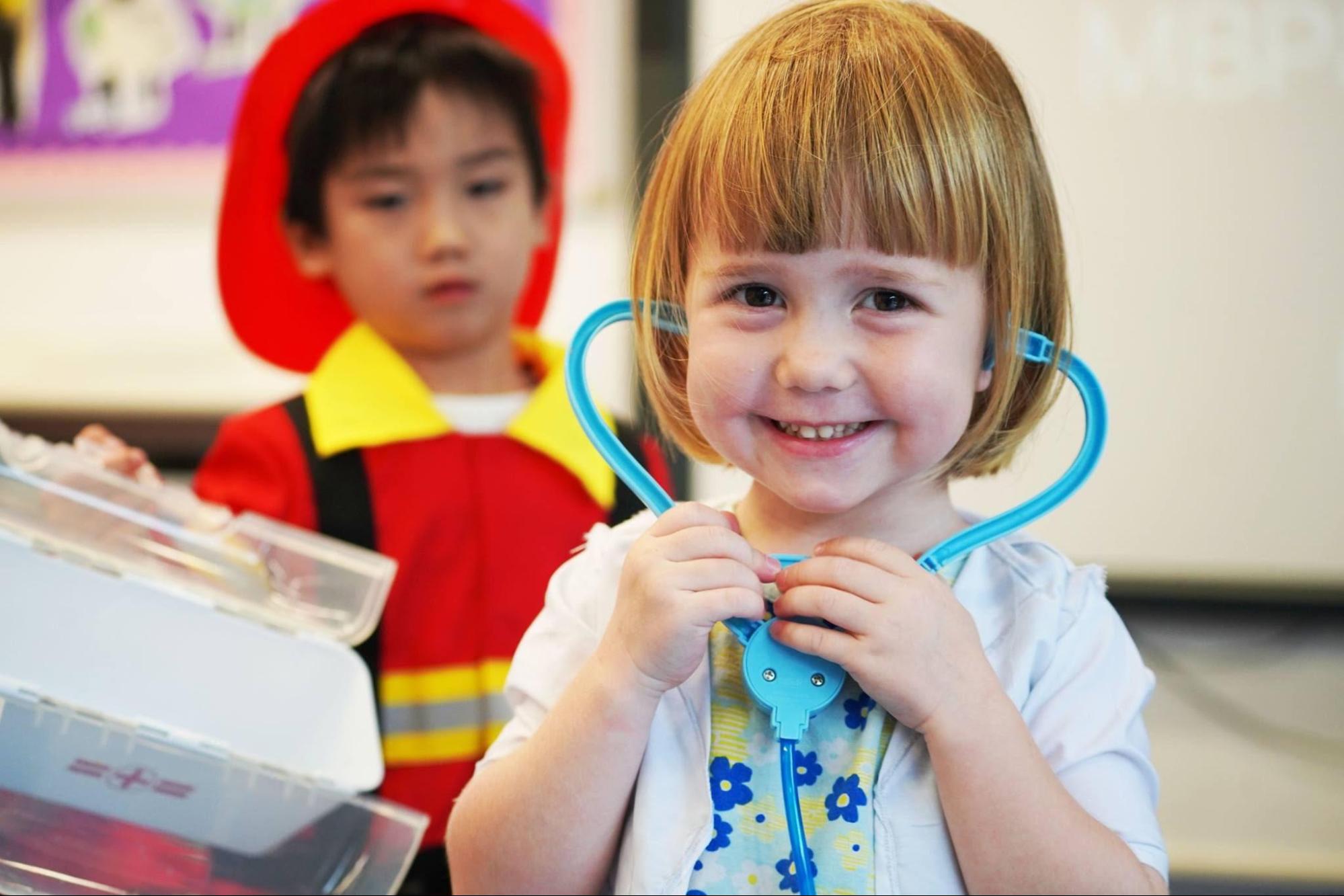
Since we opened our doors in 2012, Harrow has become a leading international school in Hong Kong, and we believe that our experience has given us some great techniques for creating a stimulating and enriching environment for all of our students. We would like to share with you just some of the ways that we achieve this at Harrow International.
Visual stimulation through the choice of colours used in the classroom.
In recent years, educational studies have focused on visual stimulation and how it can affect a classroom environment. They have concluded that colours play a large part in a child’s learning and that certain colour choices will engage with different parts of the brain, enhancing stimulation towards a particular subject.
For instance, cool colours like blues and greens inspire creativity, whereas warmer colours like red or orange will energise students. Creating a stimulating environment involves carefully finding the balance. This doesn’t need to be implemented entirely throughout the classroom but can be executed subtly, such as using different coloured books or backdrops for different subjects or themes.
Take advantage of natural light.
Studies have shown that students work much better in a classroom with more natural light. Of course, some classrooms may be less favourably positioned for optimal lighting, but that doesn’t make it impossible to take advantage of what lighting is there.
A good classroom layout will have the students sitting closer to the light and using the darker parts of the classroom for displays or storage. Light can also be optimised through the use of mirrors and brightly painted walls.
Regularly change displays and keep them interactive.
Everyone knows that displays look good in a classroom, but if they are there for too long, they simply become part of the background. A stimulating classroom will regularly change displays, fitting them to current subject topics and keeping them interactive.
By interactive, we mean more than something to look at. Interactive displays can involve puzzles, questions, games, moving parts, or pockets. But, of course, the best idea is to let the students create their own display with a gratitude or topic wall. This can be as simple as writing notes or drawing and pinning them onto a corkboard. Displays don’t get much more interactive than that.
Celebrate student work.
Celebrating student work is highly important in maintaining stimulation in a classroom and throughout a school. This can be done by creating a display section of the classroom where students can feel proud of their achievements. This has been proven to add very positive energy and improve a learning environment.
It is also vital to verbally congratulate students on their work and even reward high achievers. However, this is not to be mistaken for rewarding good behaviour. Studies have shown that rewarding good behaviour doesn’t necessarily create a stimulating or positive environment in a classroom.
Don’t let them sit still for too long.
Keeping children active is of the utmost importance when it comes to stimulation. Children of all ages struggle with sitting still for too long, and this can often lead to a lack of concentration.
Depending on the age group, teachers will employ a variety of activities that keep all students on their feet and help them physically engage with classroom activities.
Include some music.
Introducing music into a lesson has been proven to work wonders where appropriate, and this technique can be tailored to particular goals that teachers want their students to achieve. For example, calming or lo-fi music can be great for studying, while lively sing-alongs can energise students and increase their willingness to learn.
Music is also an excellent tool for language and motor skills development in younger children. It might take some research, but finding the perfect classroom soundtrack can pave the way for an energising and inspiring day at school.
Hands-on learning
Also referred to as experiential learning, this approach allows students to reflect and transfer their skills to real-life activities. Quite the opposite to traditional forms such as writing in textbooks, hands-on learning can be a much more fun and interactive way for a child to develop their skills, knowledge, and enthusiasm towards learning.
Keep a good rapport with every student in the class.
This can be a challenging task for any teacher, but it is imperative to make all students feel part of the class and feel stimulated towards learning. This involves getting to know students, actively listening, responding appropriately to questions, letting them get to know you, and much more.
Letting go of a superior image and making students aware that you aren’t perfect and that we are all humans who can make mistakes is a fantastic addition to building a good rapport. It makes a teacher far more approachable and helps develop positive relationships throughout the classroom.
Keep it fun.
Of course, making a classroom a fun place to be will promote stimulation. It is a good idea not to shy away from playing games and encourage plenty of team-building activities. This can be at a designated part of the lesson or when a teacher can see that the students might lack stimulation. A fun learning environment works for children of all ages.
Inclusivity
A way to ascertain 100% stimulation is 100% participation. This means that no child should be left out of group activities and games. An essential role of facilitating a classroom is making sure that there is enough for all learners to get fully involved. If an activity limits the number of participants, the teacher must make sure to maintain turn-taking or create multiple activities that can be done simultaneously.
Looking forwardAs a British international school, we adhere to British standards, values and traditions when it comes to our classroom environment and throughout every aspect of what we do. You are most welcome to visit us at a mutually convenient time which will give you the opportunity to look further into how we care for our students; contact us here, for more information.
